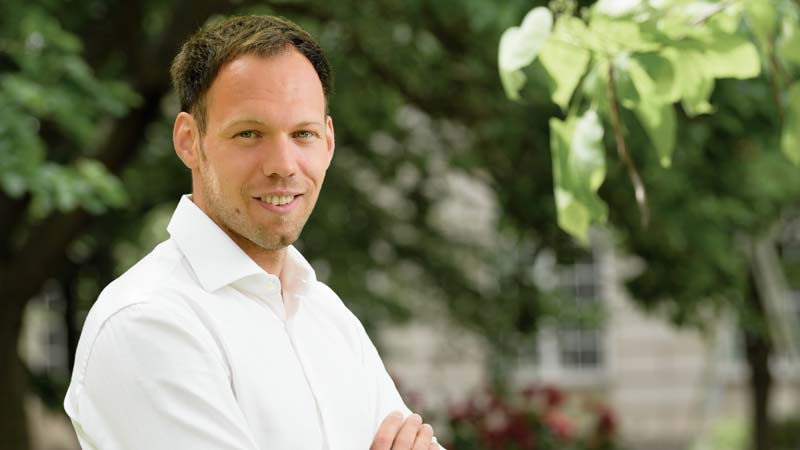Sebastian Aland Group
Modeling and Simulation of Dynamic Biological Interfaces

© HTW, Peter Sebb
Most biological systems involve material surfaces or interfaces which move and deform over time: from the flow of a liquid droplet to the growth of a biological organ. To describe such systems, our group develops mathematical models for the complex interplay of fluid, elastic and reactive phases which move, deform and grow over time. We combine methods from mathematics, physics and high-performance computing to numerically simulate the behavior of such systems. Our focus lies on biological structures such as cells and tissues where our methods help to understand fundamental principles beyond the reach of experimental observations.
Pattern formation, flow and shape dynamics of active surfaces
As opposed to experimental approaches, numerical simulations provide a means to easily vary physical parameters and geometrical constraints, therefore contributing to a fundamental understanding of the considered biological systems. Our approach to derive novel numerical methods provides unique opportunities to address exciting biological questions without being restricted to a single biological system. For example, we have developed the first numerical method to simulate viscous and viscoelastic surfaces embedded in fluids, which can now be used to address questions on self-organization not only of cell surfaces, but also of thin tissues and epithelial sheets. In close collaboration with theoretical and experimental groups, we use these simulations to reveal mechanisms of pattern formation on viscous and viscoelastic surfaces (see movie).
Biomolecular condensates interacting with membranes
A current focus of our research is on biomolecular condensates which have revolutionized the modern understanding of spatial organization in cells. Recent breakthroughs have shown that several essential biological processes in healthy cells depend on the interaction of condensates with their environment of thin elastic structures like membranes and filaments. The highly nonlinear nature of these interactions remains unclear, since they involve a complex interplay of fluid flow, surface forces, and shape dynamics, which can even culminate in topological changes. To understand these vital phenomena, we have pioneered numerical methods in this field, based on an innovative combination of phase field and finite element methods.
Future Projects and Goals
In the future, we will continue developing cutting-edge numerical methods to describe complex processes in cells and tissues. One main goal is to derive novel techniques to enable the simulation of mutual morphological changes of wetting droplets, membranes, and filaments, including membrane binding, thermal fluctuations, and membrane topological changes. In close collaboration with theoretical and experimental biophysicists we aim to reveal how condensates interact with their complex environment, thereby expanding our understanding of the spatiotemporal organization of biological cells.
Methodological and Technical Expertise
- Mathematical modeling of biological systems with partial differential equations
- Advanced finite element discretization of moving domains and surfaces
- Phase-field modeling of biological liquids and growing tissues
- Simulation of transport and flow along membranes and fluidic interfaces
- High-performance computing